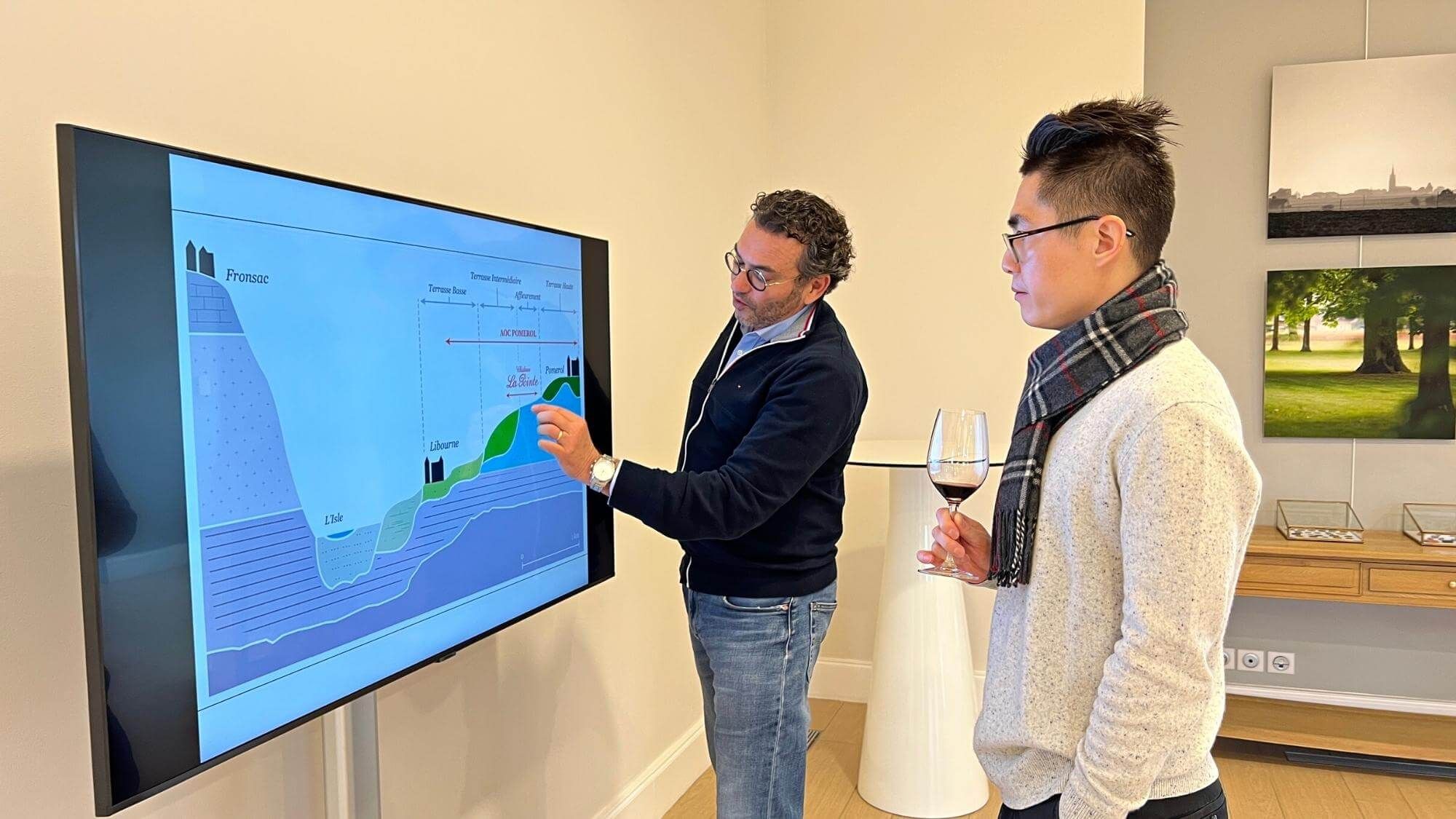AMA Tasting Note
Château La Pointe Vertical Tasting
(2004-2020)

Lark of Pomerol! Play out of the ordinary!
All wine lovers know how wonderful the top terroir is. It allows you to appreciate the essence of nature and learn the meaning of life. However, in this world, only a few vineyards have been blessed by God. If we happen to get one with mediocre potential, how can we optimize the land?
Today, I want to tell you a story about Château La Pointe, a legend about “how the ordinary becomes extraordinary”.

I really appreciate the words that Eric Monneret, the director of the winery, said to me: “Nature never makes mistakes, but we do.” Simply speaking, we should not blame the terroir for failing to make good wines and ask ourselves if we really have learned the temper of the vineyard.
Before Eric took charge of the winery, Château La Pointe was just an ordinary one on the west side of Pomerol. Similar to many wineries that make Merlot Blends, it also has gone through a history of pursuing large-scale and high density of wine. Therefore, the terroir of Château La Pointe has not been given the opportunity to show its characteristics.
After tasting the vintage of 2018, I suddenly found that the expression of fruity aromas is more precise, and the mild reduced scent even creates a tough of flint smoke. Most importantly, accompanied by the soft tannic lines, it becomes crisper and juicier on the palate, making it soothing and refreshing to drink.
Besides, I also found that the drier and hotter the vintage is, the better Château La Pointe performs (except in years with extreme water shortage). When it comes to 2020, a vintage with high tannins, it has an extra layer on the aftertaste. Perhaps with the intensification of global climate change, this niche wine will receive more attention. Actually, in traditional European and American markets, the popularity of this wine has been rising, and for Asians who like soft-style wines, now is a good time to pay more attention to Château La Pointe.

Before I visited Château La Pointe, I thought there was only sand and gravel soil. But after profound learning, I found that the winery actually has three different types of soil:
- The land near the Pomerol plateau mainly consists of sand and clay, while some areas have gravel;
- The part near the northwest is sand and clay;
- The soil of vineyards near the southwest is dominated by gravel.
The terroir of the three parcels was very different, and it is obviously not feasible to adopt the same planting method. Therefore, when Eric, an agronomist, took charge, he spent four years trying to figure out the features of each vineyard.
He explained to me: “The terroir of Château La Pointe could not nurture the power and concentration of the Pomerol plateau, but I can find a different way in terms of preciseness and clarity to create a silky Merlot blend.”
So far, his team no longer deliberately pursues a grand structure, instead, they listen to nature, follow the rules of terroir, harvest when the maturity is enough and never wait unnecessarily. When it comes to big vintages, they try to bring out a balance with more dimensions; when they encounter small vintages, they do not deliberately add extra decoration, but instead, pursue a small and beautiful sense of balance.

To better match this concept, the winemaking team adopted a gentler extraction method and limited the bottle aging to 12 months. During the aging process, instead of making Soutirage routinely, they deliberately pursue a touch of reduced character. As a result, the fruity fragrance of Château La Pointe becomes clearer and purer; the palate is also crisper and juicier, silently becoming the “Lark of Pomerol” and one of the best wineries with this soil type.
Although I have summarized the history of Château La Pointe’s transformation in just a few lines, the whole process has taken 15 years. During this time, Eric has grown from a vigorous young man to the pillar of the winery; in the same period, the members of the winemaking team have retired one by one, and the succession from the older generation to the young fellows has been completed around 2018.
The average age of the new team of Château La Pointe is between 30 and 35 years old, and they are marching toward the peak of their careers. Besides, all of them are versatile, for those who are in charge of growing also know how to make wines, and vice versa. Where will Château La Pointe go under the leadership of the young winemaking team? Let’s wait and see!
This vertical tasting spans more than ten vintages of Château La Pointe from 2004 to 2020, and the scores and bilingual tasting notes have also been posted on my website.
See you next time! Cheers!

